
|
Olympus E-510 Image Samples |

|
My other articles related to the |
|
This is the first part of my E-510 sample collection. It shows pictures of the same object: a lake in front of my house in Crofton, MD. While this may be not the best subject for image samples, it is convenient: all these pictures were taken from about 50 feet off my doorstep. I could review the samples almost immediately on a computer screen and, if needed, add more, or change some parameters. Another advantage is that I'm familiar with the subject, knowing the best time to arrange a session and where in the image to look for its strengths and weaknesses. Other samples, for more varied subjects and conditions, can be found in E-510: More Image Samples. The goal of this exercise is not only to show off the E-510 capabilities, but also to analyze the impact various camera settings have on the resulting images. This is a small part of the material I've gathered for my own use, to work out the adjustments which I like most. Most samples are shown as two pictures, a reduced (and re-sharpened) full frame, and a selected fragment of that frame, shown in 1:1 pixel scale without any postprocessing (just cropped and re-saved). Some are accompanied by links to full, original frames (be warned: the files are quite large, 6 MB or more). All images in this page were converted to RGB in-camera, saved as SHQ (1:2.7) JPEGs. Sawing raw images makes sense only if you are tweaking the conversion in postprocessing. When evaluating the 1:1 samples, remember that they show detail which will not be seen in a reasonably-sized print. Each of them would be just 44 mm (1.73") tall on a 30×40 cm (12×16") print, while on a 96-dpi screen their height is 3 1/8" (79 mm). All image flaws are significantly enhanced. The kit lenses at various focal lengths First, some standard samples shot at my so-far favorite parameters at various focal lengths of both kit lenses. The parameters used for all pictures in this section are: Natural Picture Mode with sharpness N-2, contrast N-1 and saturation N±0; noise filter off. White balance at 5300°K (sunny), aperture priority AE with -0.3 EV compensation at F/5.6. 14-42 mm F/3.5-5.6 ZD ED | ||
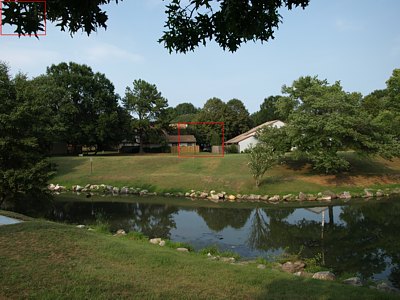
|
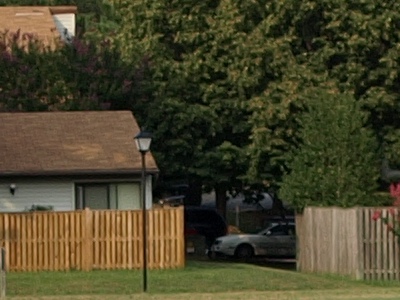
| |
| 14-42 mm F/3.5-5.6 ZD ED at 14 mm [full frame] | ||
|
A solid performance for this focal length, but no match for the 14-54 F/2.8-3.5 ZD, hardly a surprise. No miracles here, but well done.
I could make the full-scale samples look better on the screen by applying more in-camera sharpening, but decided against that; my experience shows that such "under-sharpened" images submit themselves better to any sharpening in postprocessing. The corner sample shows a moderate amount of chromatic aberration, just slightly more than in some much more expensive lenses I have used. |
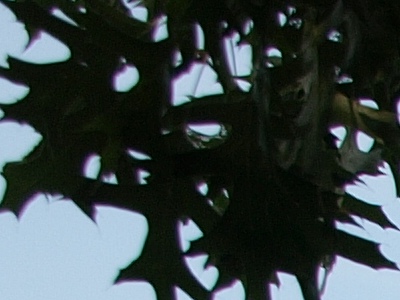
| |
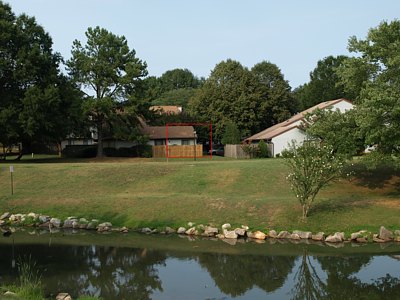
|
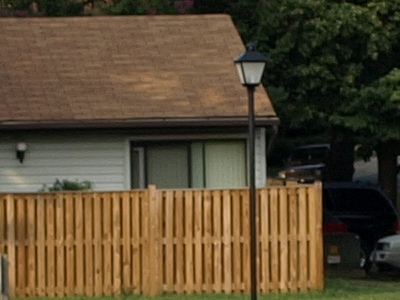
| |
| 14-42 mm F/3.5-5.6 ZD ED at 25 mm [full frame] | ||
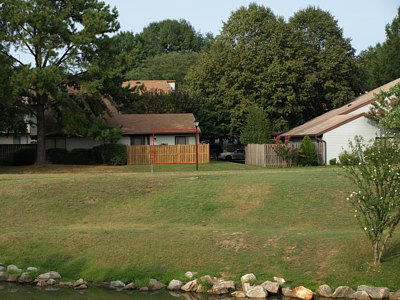
|
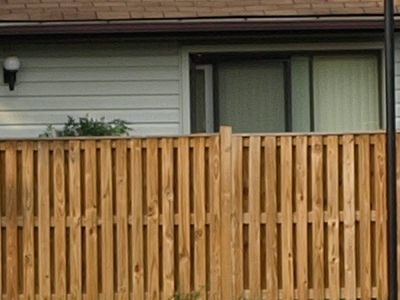
| |
| 14-42 mm F/3.5-5.6 ZD ED at 42 mm [full frame] | ||
|
The lens seems to work best at the long end, with a performance slightly better than that of the "old" 14-45 mm F/3.5-5.6 ZD. I wasn't expecting this from this super-compact construction. Colors are natural and pleasing, with some warmth due to the "sunny" white balance used in late-afternoon sunlight; there is no excessive sharpness fall-off near the edges, and detail in highlights is preserved thanks to the -0.3 EV exposure compensation applied. All pictures were shot with ±0.3 EV exposure bracketing (relative to my -0.3 EV offset), and the middle version was consistently right on the spot; I ended up not using even a single one of bracketed exposures. A similar series shot in harsher sunlight looked better at -0.7 EV, as expected. In general I do not have to change my habits acquired with the E-500: in both cameras the AE system behaves almost the same way. I have to put any reports of this camera "consistently underexposing" into the urban myth drawer. To really appreciate the results delivered by this camera you should, instead of looking at the small fragments, inspect full frames, available from the links in captions, 40-150 mm F/4.0-5.6 ZD ED | ||
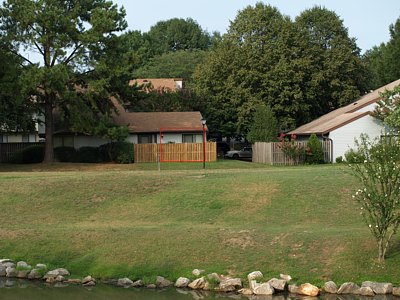
|
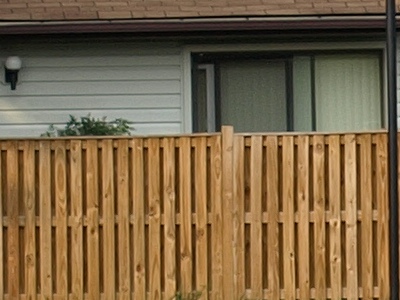
| |
| 40-150 mm F/4.0-5.6 ZD ED at 40 mm [full frame] | ||
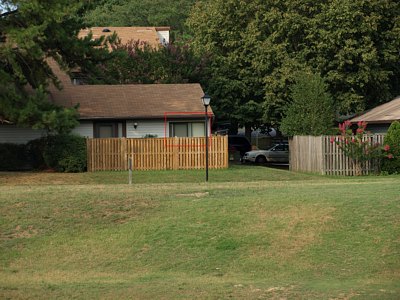
|
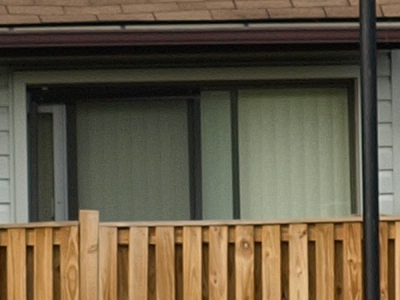
| |
| 40-150 mm F/4.0-5.6 ZD ED at 73 mm [full frame] | ||
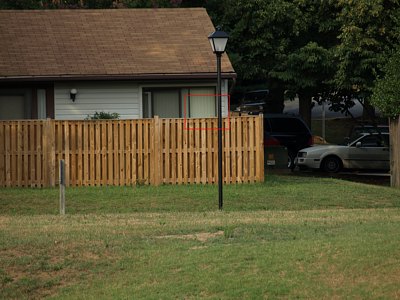
|
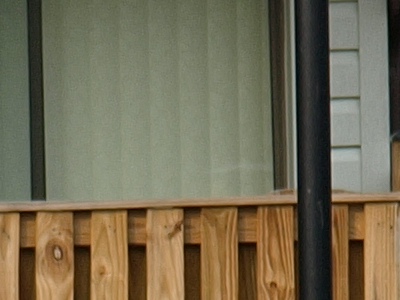
| |
| 40-150 mm F/4.0-5.6 ZD ED at 150 mm [full frame] | ||
|
This lens, unlike the other one, does the best job at the short end, 40 mm. At the long end the center is very nice, but the peripheries get some fuzziness — not as good as the "old" 40-150 mm F/3.5-4.5 ZD. Well, this is the price we're paying for compactness, and, frankly, I wasn't able to notice that in everyday use — only when I got down to analyzing these samples. Again, an amazing performance for a supercompact design. Frankly, I do not expect the lens to become a bottleneck in uses I'm going to put it to. | ||
|
Image sharpening Now let's have a look how in-camera image sharpening affects images. Here is a full frame and three full-scale samples, sharpened at -2, 0, and +2 in the Natural picture mode. All pictures were shot within seconds from each other, with the 14-42 mm F/3.5-5.6 ZD ED lens at 42 mm. The camera was in manual focus mode, with AF "on demand" before the first frame, so that all are focused identically. Aperture priority with -0.3 EV compensation: 1/250 s at F/5.6, ISO 100. White balance at 5300°K (sunny), noise filtering off. | ||
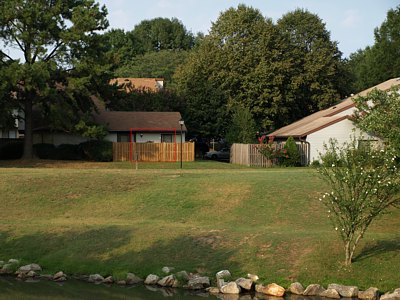 Whole frame, reduced and re-sharpened |
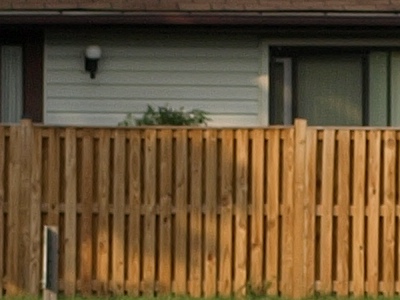 Sharpening at N-2 | |
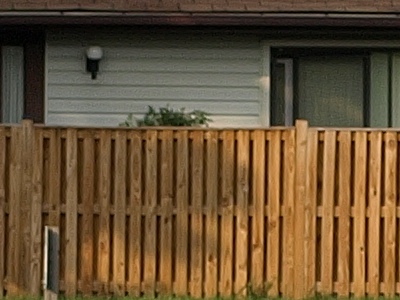 Sharpening at N±0 |
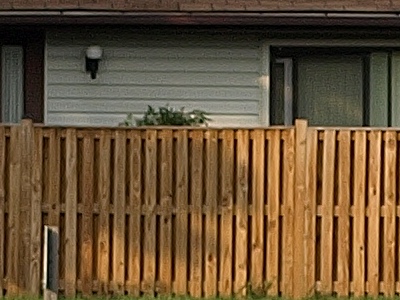 Sharpening at N+2 | |
|
While the image at N-2 looks a bit soft, it does not really contain less detail than the others; it will also submit itself better than the others to sharpening in the postprocessing stage. Without any postprocessing, N±0 looks best; N+2 already suffers from some noise and contour artifacts. I think in the future I will use N-1 as a default. | ||
|
Picture Modes These are pre-packaged combinations of sharpening, contrast, and saturation, as described in the review. For this comparison, I left the settings of these parameters for each mode at the factory settings, to show how the baseline values affect the images. The reduced full frames at the left should give you an idea how picture modes affect the general tonality of produced images; full-scale samples at the right allow for some analysis of the detail. Outside of the Picture Mode, all other settings were identical in all three samples: the 14-42 F/3.5-5.6 ZD ED lens at 25 mm, aperture priority (-0.3 EV): 1/320 s at F/5.6, noise filtering off. | ||
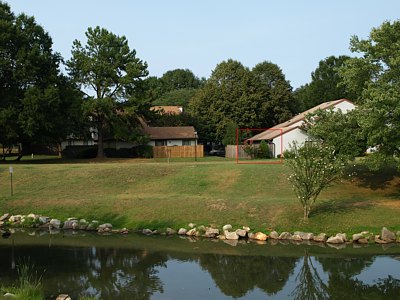
|
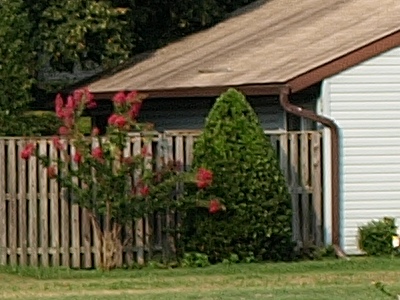
| |
| Picture Mode: Vivid [full frame] | ||
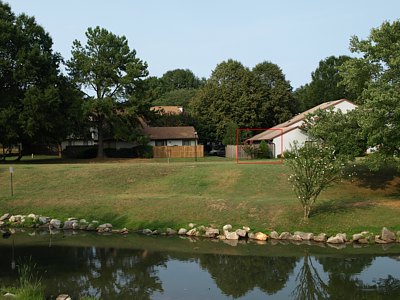
|
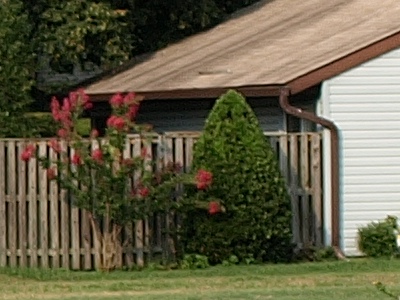
| |
| Picture Mode: Natural[full frame] | ||
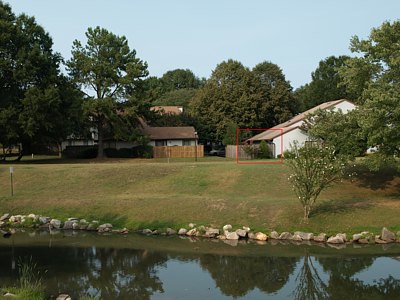
|
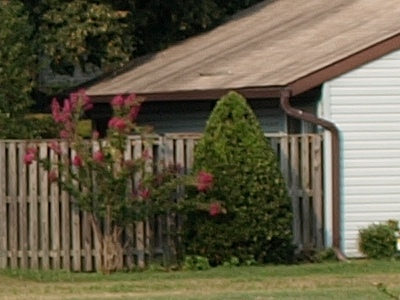
| |
| Picture Mode: Muted [full frame] | ||
|
The differences between Picture Modes seem to be less pronounced than in the E-500, where Vivid was too aggressive. In case you were unhappy with my choice to show low-sharpening samples in the first section of this page, here are another three samples for various Color Modes, so that you may suit yourself and draw your own conclusions. This time the 40-150 mm F/4.0-5.6 was used, set to 98 mm. Aperture priority (-0.3 EV): Outside of the Picture Mode, all other settings were identical in all three samples: the 14042 F/3.5-5.6 ZD ED lens at 25 mm, aperture priority (-0.7 EV): 1/100 s at F/8, ISO 100, noise filtering off. | ||
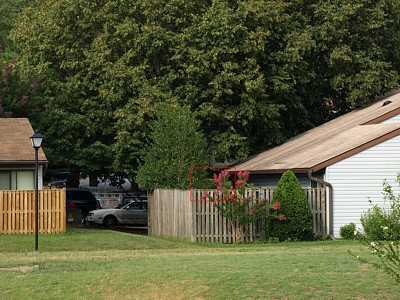
|
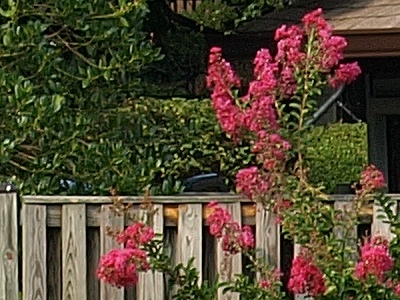
| |
| Picture Mode: Vivid [full frame] | ||
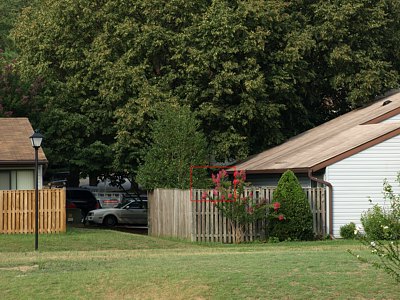
|
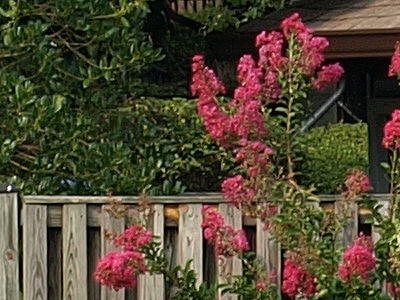
| |
| Picture Mode: Natural [full frame] | ||
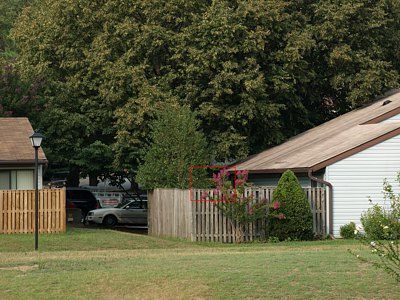
|
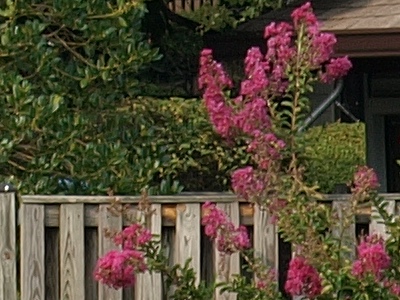
| |
| Picture Mode: Muted [full frame] | ||
|
Looking at these three, I tend to think that the Vivid mode may be still a bit too strong, especially in terms of sharpness and saturation, but some people may like it, especially when printed (as opposed to pixel-peeping). If you look at the three original, full-size files (warning! 6-7 MB each!), the chances are you'll find some eye candy you will like. | ||
|
Turning off noise filtering reveals the real resolving power of this lens/camera combination. Even with this modest, tiny lens, the amount of detail (not to be confused with contour sharpness) is impressive. Just have a look at another fragment of the Natural frame: |

| |
|
Sensor gain (ISO) The E-500 offers ISO settings from 100 to 1600. Here I'm presenting my lake samples up to ISO 800, because using ISO 1600 in a full sunshine would be rather obscene and unrealistic. For some samples at that speed, refer to Noise Filtering and Sharpness. | ||
|
Here, again, I kept noise filtering off, a setting I like best — even at ISO 800 (see the next section).
This reduced full frame (right, at ISO 100) shows the place from which the samples have been cropped. The pictures were taken with the 14-42 mm lens at 42 mm, aperture priority (-0.3 EV) at F/5.6, shutter speed from 1/250 s to 1/1600s (with 1/3 EV variations probably due to changing conditions). Noise filtering off, Natural mode, sharpness N-2, contrast N-1. |
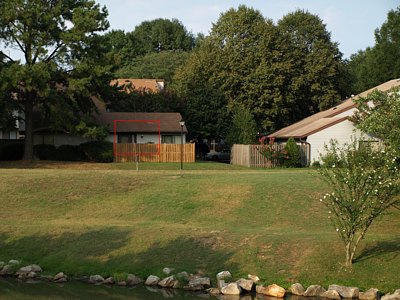
| |
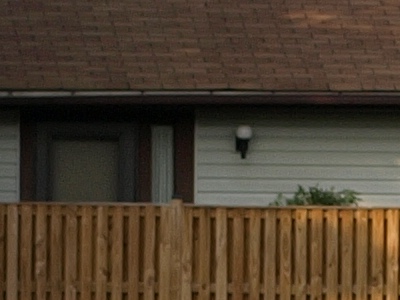
|
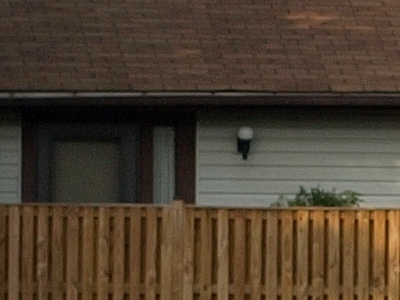
| |
| ISO 100 | ISO 200 | |

|
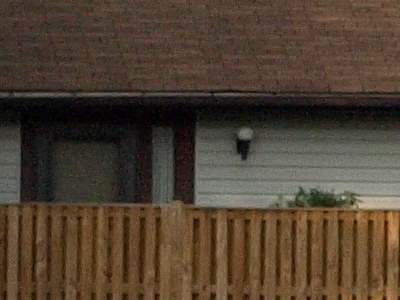
| |
| ISO 400 | ISO 800 [full frame] | |
|
You can see how the noise gradually creeps in the gray door area. Some is visible at this magnification even at ISO 100, but at that setting (and not only) it is tight, uniform, and clean. Even at ISO 800 the noise structure is not disturbing; a welcome change from the E-500, where it had a significant color component. Note gradual loss of sharpness, starting at ISO 200, and increasing beyond that. Some of it must be due to the noise itself (as it hides the detail), but some — from comes from noise filtering; I am almost sure that there is some involved even in the Off setting. | ||
|
Noise filter at ISO 800 As we know, this filter reduces the image noise, but at a price: the sharpness is negatively affected. While a separate article deals with this issue in the E-510, here is how that looks for ISO 800. These shots were framed identically as the ones from the previous section, and all parameters except for noise filtering were exactly the same. | ||

|
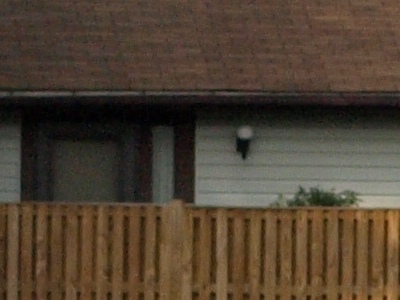
| |
| ISO 800, NF Off | ISO 800, NF Low | |
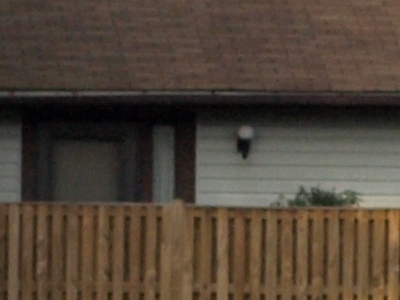
|
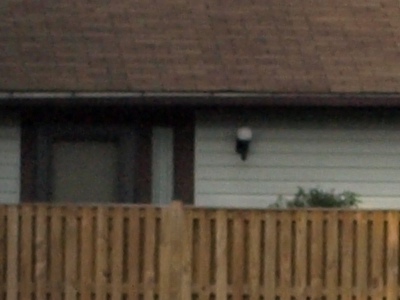
| |
| ISO 800, NF Standard | ISO 800, NF High | |
|
A direct comparison leaves no doubt: even at ISO 800 I prefer to set the noise filter to Off. The last picture looks too much like ones generated by the Digital Rebel. | ||
|
More E-510 images Other pages on my site with images from the E-510:
|

|
My other articles related to the |
|
Evolt® and Olympus® are registered trademarks of Olympus Corporation.
This page is not sponsored or endorsed by Olympus (or anyone else) and presents solely the views of the author. |
| Home: wrotniak.net | Search this site | Change font size |
| Posted 2007/08/12; last updated 2007/11/01 | Copyright © 2007 by J. Andrzej Wrotniak |